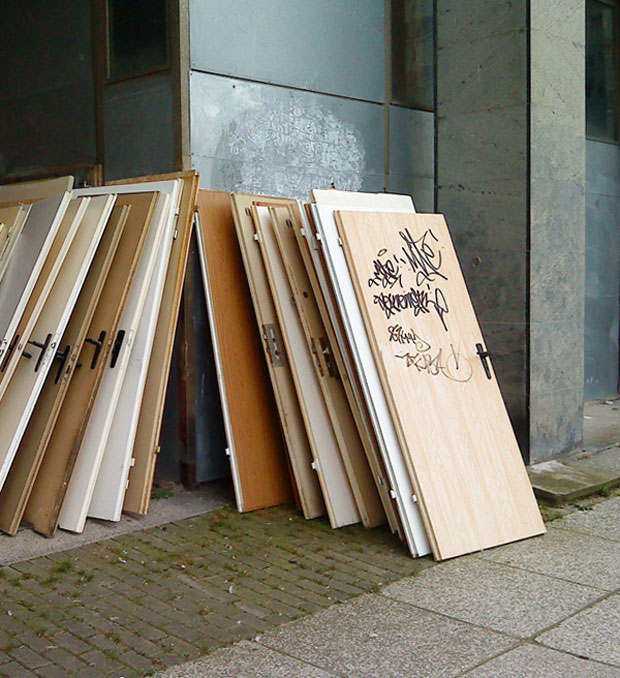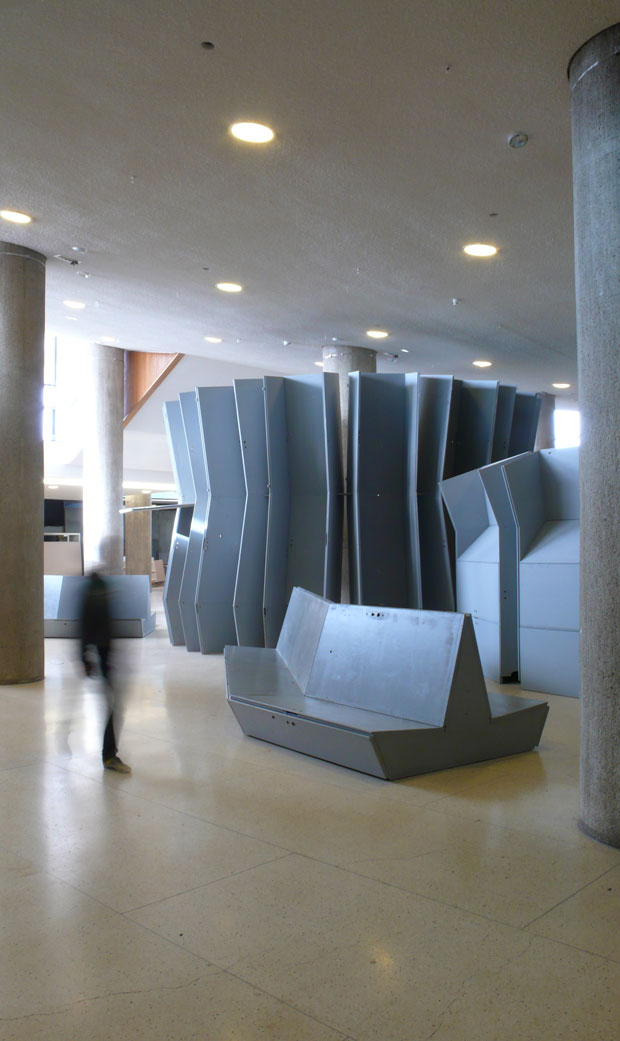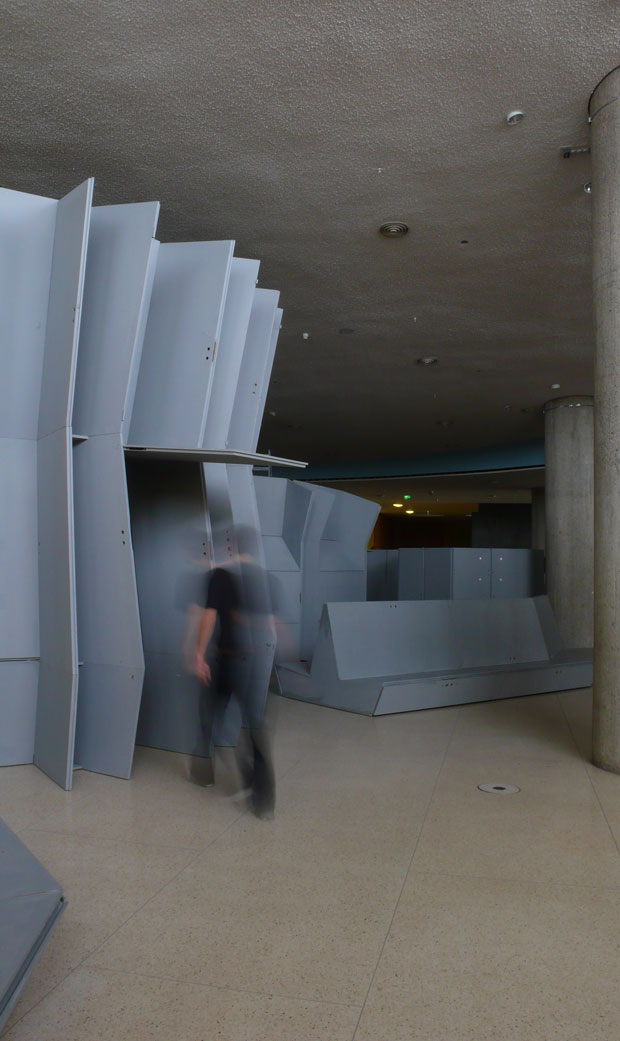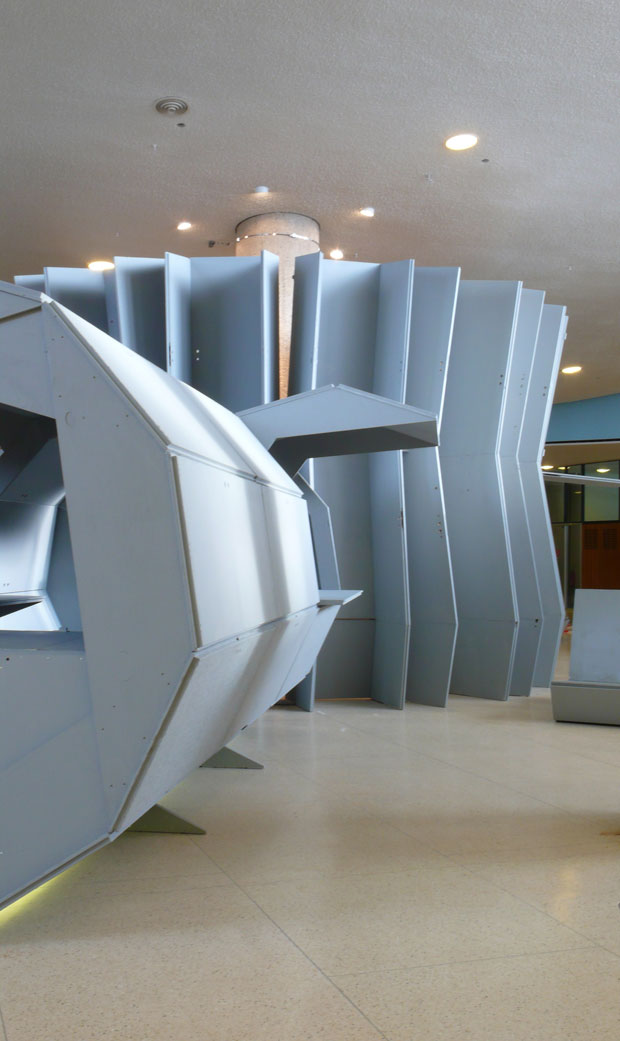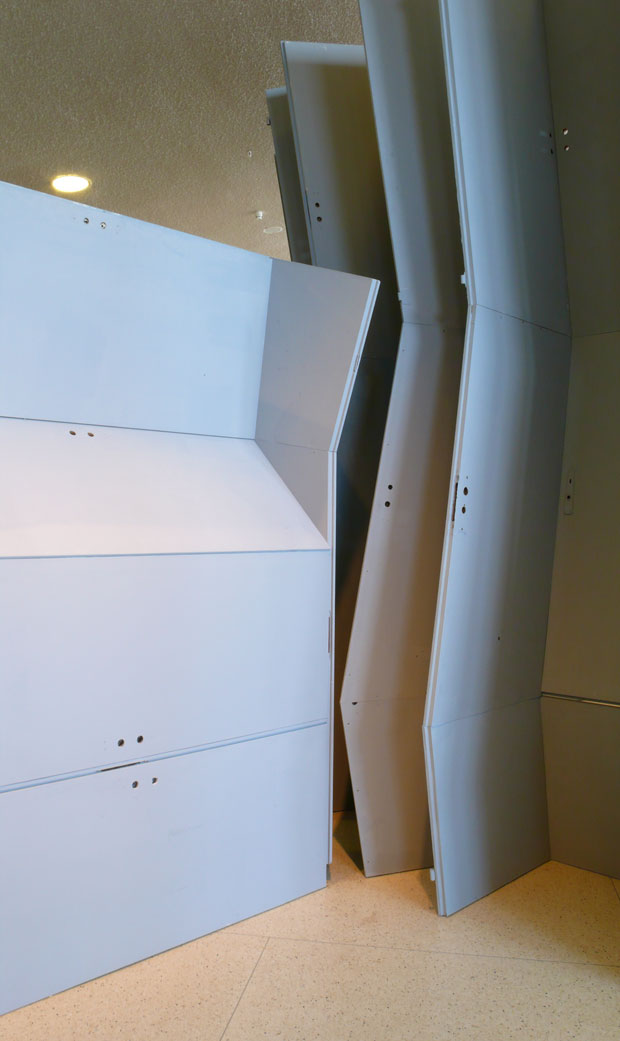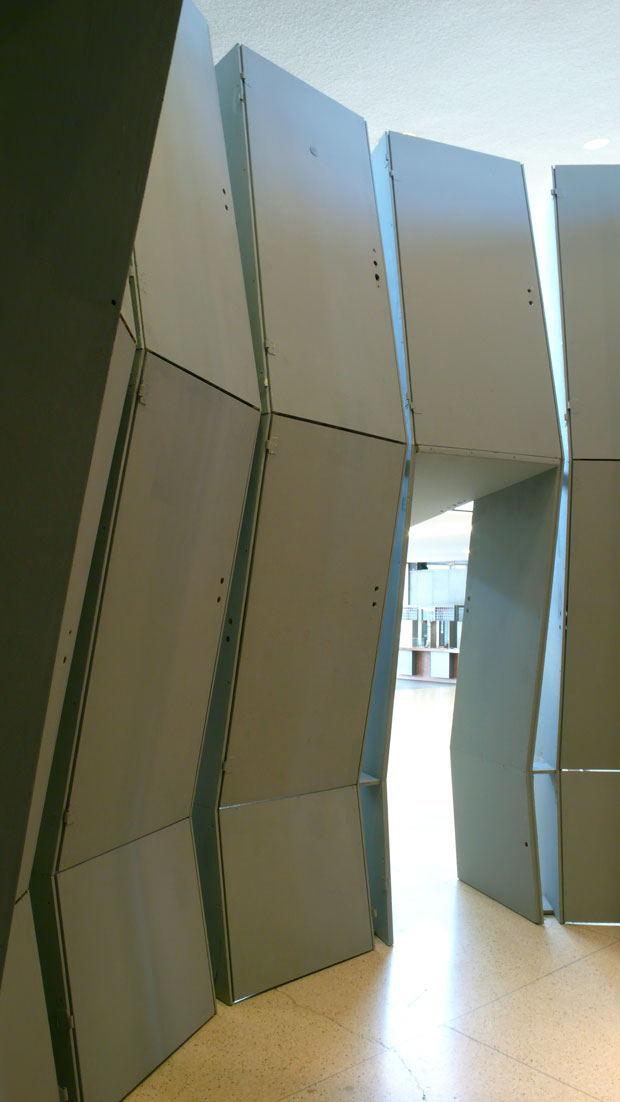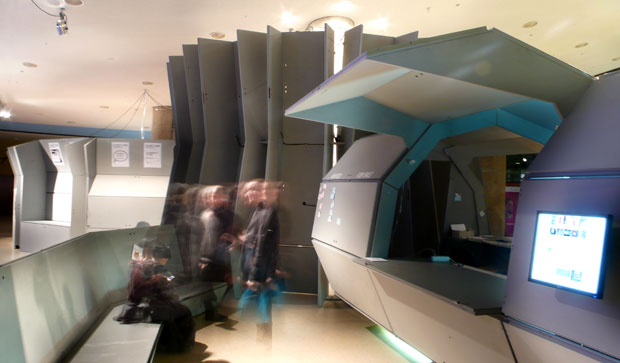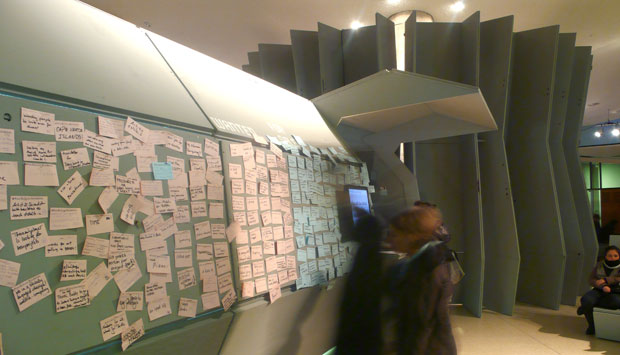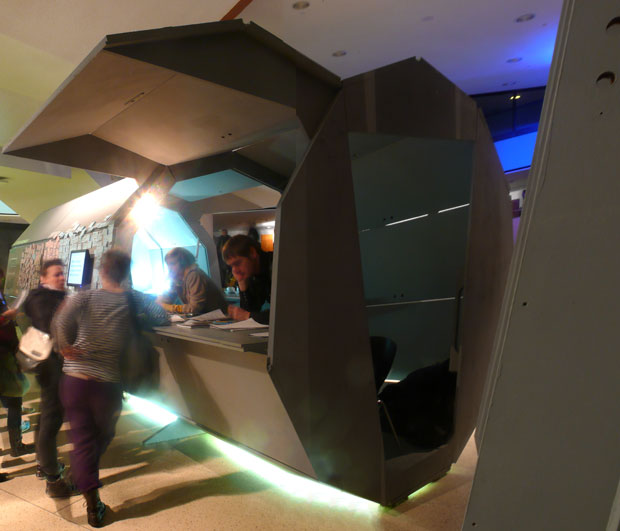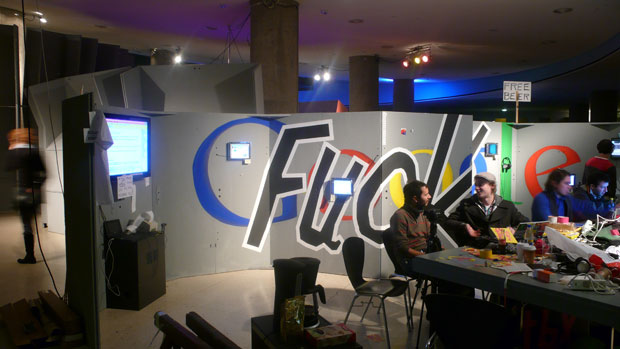TRANSMEDIALE 10-FUTURES EXCHANGE
commissioned by transmediale.10
mit freundlicher Unterstützung der Halleschen Wohnungsgesellschaft mbH und Zapf Umzüge GmbH
Exibition architecture for the festival transmediale.10 at Haus der Kulturen der Welt,
Berlin, 02. – 07.02.2010
The space station, as an extreme example of the utopian city and efficient habitable structures, is an integral part of the past century’s vision of the future. This future has arrived, and the dream of inhabited cities in outer space will remain unfulfilled for a long time to come. For transmediale.10, raumlaborberlin occupies the foyer of the House of World Cultures with a research station called the Futures Exchange. Special modules serve as workshops and communication areas designed for the occupancy of artists and visitors. As primary building materials, the doors of East German panel flats which had to yield to wrecking balls have been salvaged and re-appropriated for use. Originating from Halle-Neustadt they are a symbol for the shrinking and deconstruction of this town, which was conceived in the early 60’s as part of a utopian vision for the post-war modernist city. The doors, representing waste and the failure of the 20th Century’s ideological struggles, now find new life as transmediale.10’s temporary space station for process-based artistic practice.
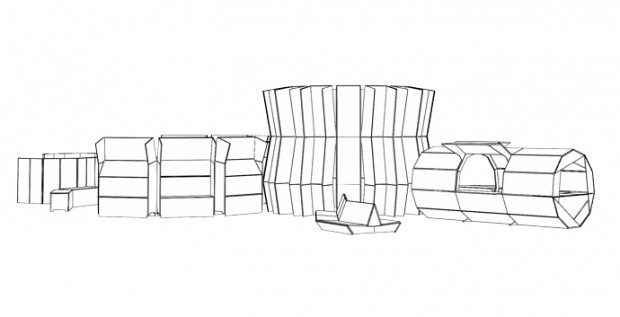
Ausstellungsarchitektur für das Festival transmediale.10 im Haus der Kulturen der Welt,
Berlin, 02. – 07.02.2010
Jahr 2010. Die Raumstation als extremes Beispiel von utopischen Stadt- und Raumgefügen fasziniert
uns im Hinblick auf die Zukunftsvisionen der vergangenen 100 Jahre. Jetzt ist diese Zukunft gegenwärtig und die Visionen bewohnter Städte im Weltall werden noch lange unerfüllt bleiben. raumlaborberlin besetzt für die transmediale.10 das Foyer des Haus der Kulturen der Welt mit einer Forschungsstation genannt Futures Exchange. Spezialisierte Raummodule bilden ein communication cluster. Eine Werkstatt, Ort der Kommunikation, gedacht für die Aneignung durch Künstler und Besucher. Als Baumaterial werden Türblätter aus Plattenbauten, die dem Abriss weichen müssen, verwendet. Sie stammen aus Halle-Neustadt und stehen für die Schrumpfung, den Rückbau dieser Stadt, die 1964 nach den Prinzipien des Städtebaus der Moderne als Utopie gegründet wurde. Aus diesen Türblättern – Abfallprodukte und Spuren dieser Utopie – entsteht für die transmediale.10 eine temporäre Raumstation für prozessorientierte künstlerische Praxis.
Die Bauelemente: Türen aus den Wohntürmen am Riebeckplatz 6 und 10, Halle.


